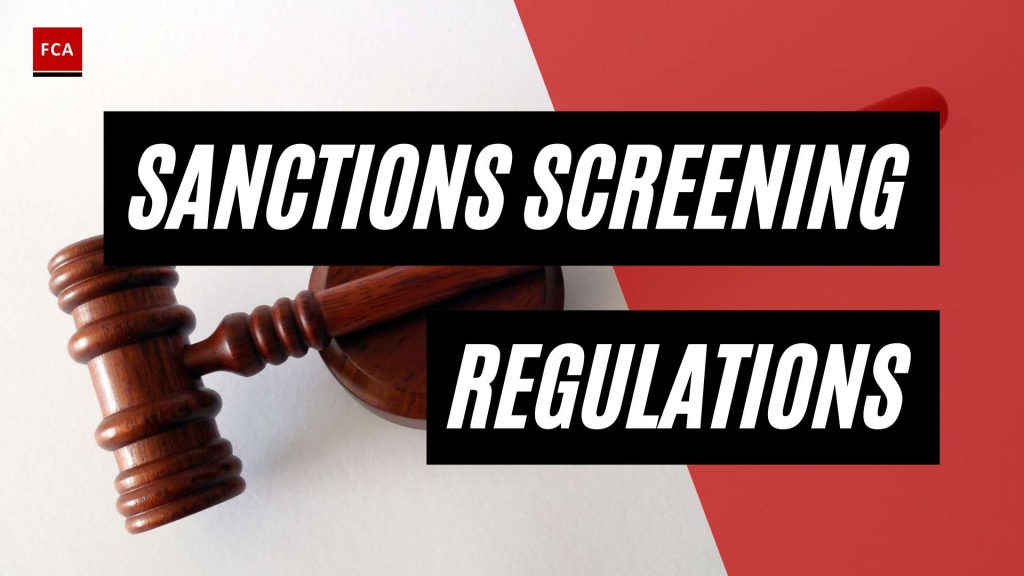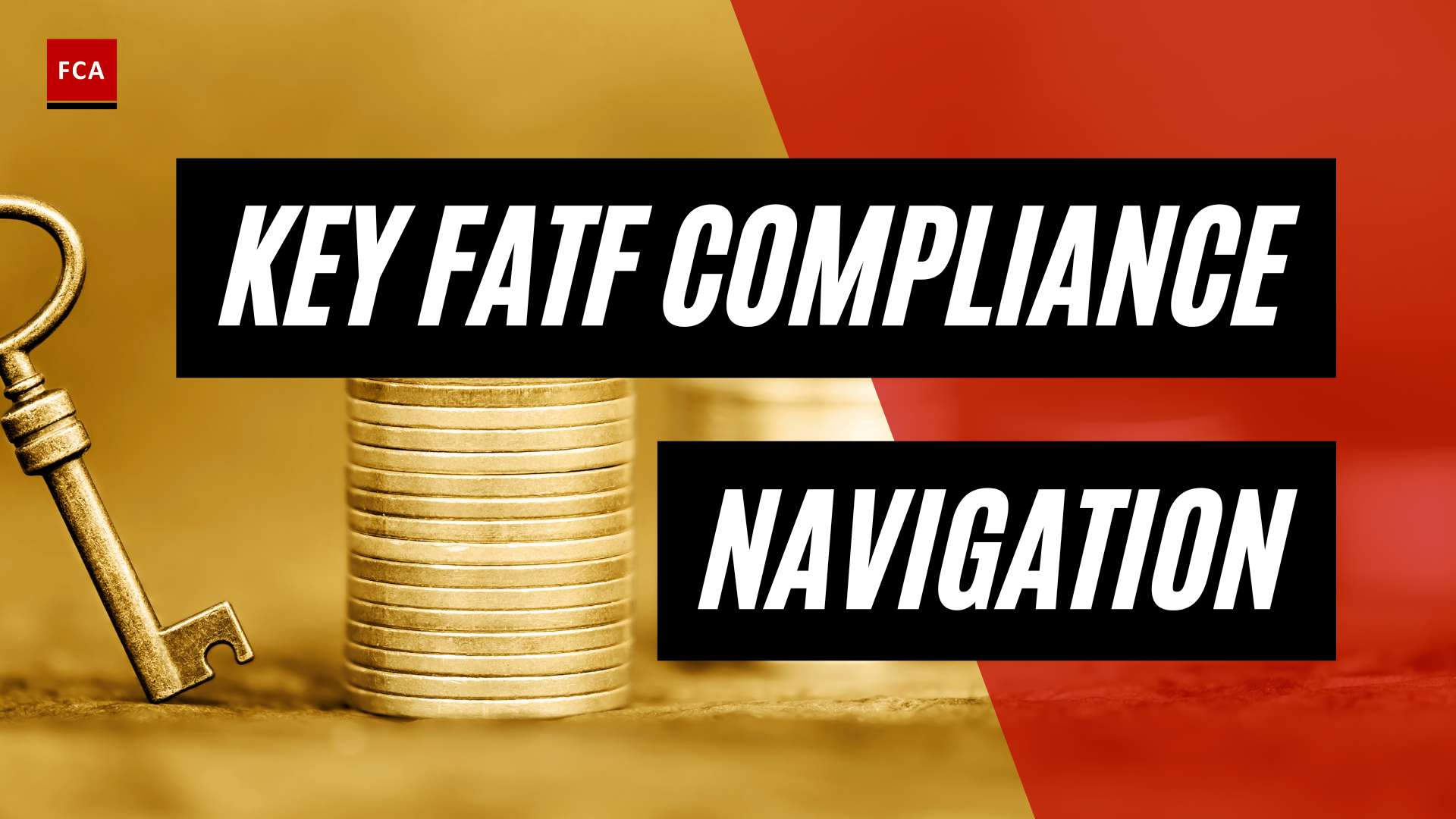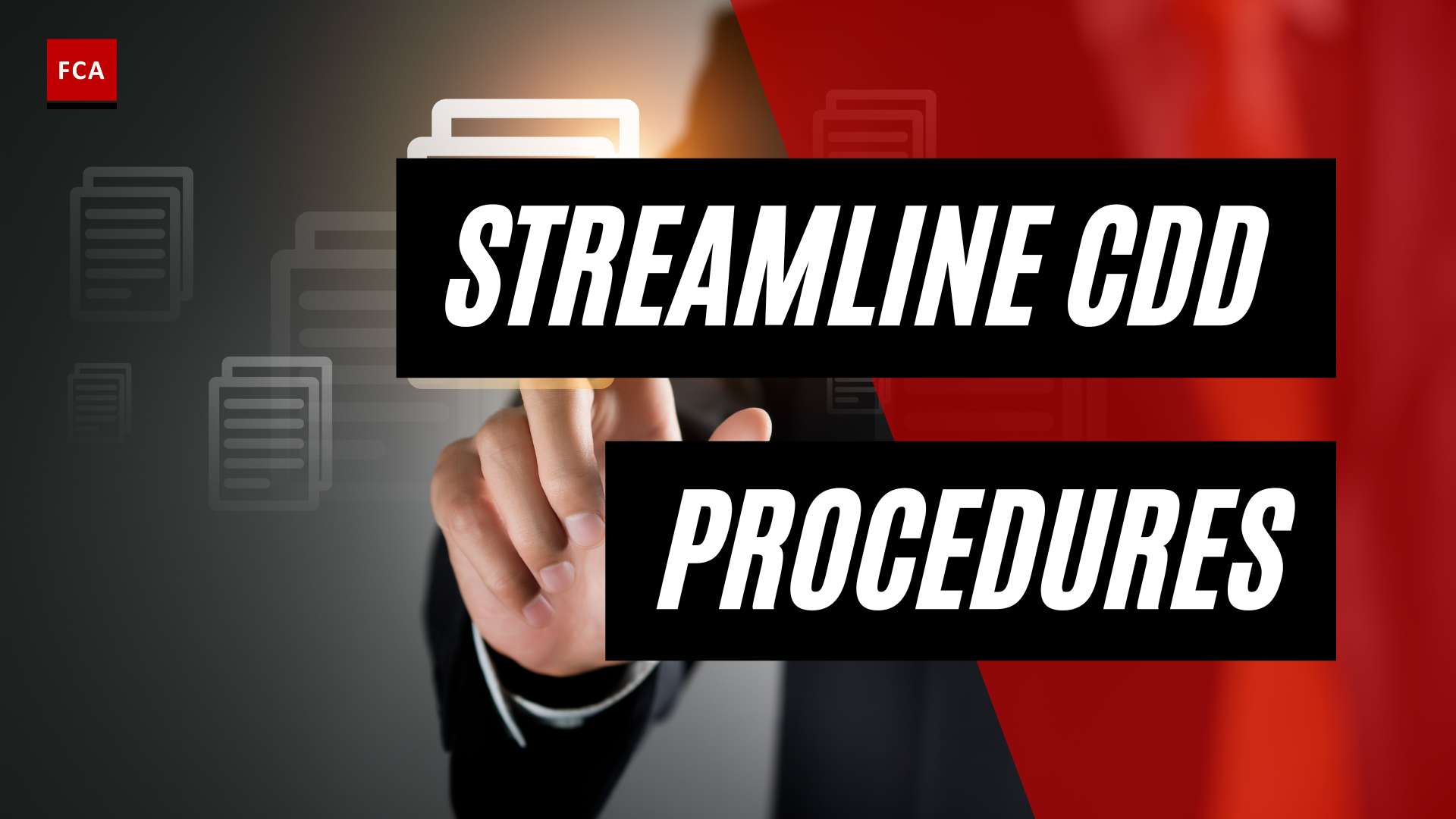Understanding Sanctions Screening Regulations
In today’s global financial landscape, complying with sanctions screening regulations is of utmost importance for businesses operating in various industries. This section provides an overview of sanctions screening, its significance, and the importance of compliance with sanctions screening regulations.
Introduction to Sanctions Screening
Sanctions screening refers to the process of identifying and assessing individuals, entities, and organizations against government-issued sanctions lists. These lists contain names of individuals, groups, or countries that are subject to economic and trade restrictions due to various reasons, such as involvement in terrorism, money laundering, or human rights violations.
The primary goal of sanctions screening is to prevent businesses from engaging in transactions with sanctioned parties. By screening customers, business partners, and other third parties against these lists, organizations can identify and mitigate the risks associated with potential financial crimes, such as money laundering and terrorist financing.
Sanctions screening involves the use of technology solutions, such as specialized software, to automate the screening process and ensure thorough and accurate checks. Real-time sanctions screening is particularly important to identify sanctioned parties promptly and prevent illicit transactions from taking place.
Importance of Compliance with Sanctions Screening Regulations
Compliance with sanctions screening regulations is crucial for several reasons. Firstly, it is a legal requirement in many jurisdictions. Regulatory bodies, such as financial intelligence units and government agencies, enforce sanctions screening regulations to combat money laundering, terrorist financing, and other illicit activities.
Failing to comply with sanctions screening regulations can result in severe penalties, including hefty fines, reputational damage, and legal consequences. These penalties can have a significant impact on an organization’s financial stability and ability to conduct business.
Additionally, compliance with sanctions screening regulations helps businesses safeguard their reputation and maintain the trust and confidence of their customers and stakeholders. By effectively screening individuals and entities against sanctions lists, organizations demonstrate their commitment to ethical business practices and their dedication to preventing financial crime.
Furthermore, compliance with sanctions screening regulations strengthens the overall Anti-Money Laundering (AML) compliance framework of an organization. Sanctions screening is an integral part of an organization’s AML program, which is designed to detect, prevent, and report suspicious activities related to money laundering and other financial crimes. By implementing robust sanctions screening processes, organizations enhance their ability to identify and mitigate AML risks effectively.
To achieve compliance with sanctions screening regulations, organizations need to understand the key components of sanctions screening, challenges involved, and best practices to implement. The following sections will delve into these aspects in more detail.
Key Components of Sanctions Screening
To achieve compliance with sanctions screening regulations, organizations must have a thorough understanding of the key components involved in the process. This section will outline the three essential components of sanctions screening: identifying and monitoring sanctions lists, implementing effective screening processes, and conducting ongoing due diligence.
Identifying and Monitoring Sanctions Lists
Identifying and monitoring sanctions lists is a critical step in sanctions screening. Sanctions lists are compiled by governmental and regulatory bodies to identify individuals, entities, and countries subject to economic and trade restrictions. These lists may include sanctions imposed for various reasons, such as terrorism, money laundering, or human rights violations.
To effectively identify and monitor sanctions lists, organizations need access to reliable and up-to-date sources of information. They must establish robust processes to regularly review and update their sanctions lists to ensure compliance. Automated sanctions screening tools and software can streamline this process by providing real-time updates and alerts when new entries are added to the lists. For more information on sanctions screening tools, check out our article on sanctions screening tools.
Implementing Effective Screening Processes
Implementing effective screening processes is crucial to ensure that all relevant transactions and business relationships are thoroughly assessed for sanctions risks. This involves systematically comparing customer and transactional data against the identified sanctions lists. Organizations can use advanced technologies and sophisticated algorithms to enhance the accuracy and efficiency of the screening process.
Real-time sanctions screening is particularly important, as it allows organizations to identify potential sanctions matches in a timely manner and take appropriate actions to mitigate risks. By integrating sanctions screening systems into their operations, organizations can automate the screening process and minimize the risk of manual errors. Learn more about the sanctions screening process in our article on sanctions screening process.
Conducting Ongoing Due Diligence
Conducting ongoing due diligence is a vital component of sanctions screening. It involves continuously monitoring customer behavior, transaction patterns, and changes in sanctions lists to identify any potential risks or red flags. Ongoing due diligence ensures that organizations stay updated on any changes that may affect their customers’ sanctions status.
By regularly reviewing customer profiles and conducting periodic checks against updated sanctions lists, organizations can promptly identify any changes that may impact their compliance status. This proactive approach helps in preventing potential violations and maintaining a robust compliance framework. To understand the requirements and best practices for ongoing due diligence in sanctions screening, refer to our article on sanctions screening requirements.
By focusing on these key components of sanctions screening – identifying and monitoring sanctions lists, implementing effective screening processes, and conducting ongoing due diligence – organizations can enhance their AML compliance framework and mitigate the risks associated with financial sanctions. This not only protects them from potential financial and reputational damages but also strengthens customer trust and confidence in their operations.
Challenges in Achieving Compliance
Complying with sanctions screening regulations can present various challenges for organizations. These challenges stem from the complexity of the global sanctions landscape, the need to keep up with regulatory changes, and the delicate balance between compliance and operational efficiency.
Complexity of Global Sanctions Landscape
The global sanctions landscape is intricate and constantly evolving. Different countries and regions maintain their own sanctions lists, making it challenging for organizations to identify and monitor all relevant entities and individuals. These lists can include politically exposed persons (PEPs), sanctioned countries, terrorist organizations, and other entities subject to sanctions. Managing and cross-referencing these lists to ensure comprehensive sanctions screening can be a complex task.
To address this challenge, organizations need to invest in robust sanctions screening solutions that can efficiently identify and compare names against multiple sanctions lists. These solutions, often powered by advanced technology and algorithms, help automate the screening process and reduce the risk of missing any sanctioned entities. For more information on sanctions screening tools, refer to our article on sanctions screening tools.
Keeping Up with Regulatory Changes
Sanctions and regulations regarding sanctions screening are not static. They frequently undergo updates and amendments, requiring organizations to stay informed and adapt their compliance procedures accordingly. Failure to keep up with these changes can result in non-compliance and potential legal and reputational risks.
To address this challenge, organizations should establish a robust process for monitoring regulatory updates. This can involve subscribing to regulatory news alerts, participating in industry forums, and engaging with compliance experts. By staying proactive and informed about changes in sanctions screening requirements, organizations can ensure their compliance procedures remain up to date. For more information on the sanctions screening process, refer to our article on sanctions screening process.
Balancing Compliance with Operational Efficiency
Striking a balance between compliance with sanctions screening regulations and operational efficiency is another challenge faced by organizations. The screening process can be time-consuming, especially when dealing with large volumes of transactions and customer data. Organizations must ensure that their compliance efforts do not impede their day-to-day operations, customer experiences, or cause unnecessary delays.
To overcome this challenge, organizations should implement efficient and streamlined sanctions screening systems. These systems, often powered by advanced technologies like artificial intelligence and machine learning, can help automate the screening process, conduct real-time screening, and reduce false positive results. This enables organizations to achieve a balance between compliance and operational efficiency. For more information on sanctions screening solutions, refer to our article on sanctions screening solutions.
By addressing the challenges posed by the complexity of the global sanctions landscape, staying updated on regulatory changes, and balancing compliance with operational efficiency, organizations can enhance their overall AML compliance framework and minimize the risk of financial and reputational damages.
Best Practices for Achieving Compliance
To effectively comply with sanctions screening regulations, organizations must adopt best practices that ensure thorough and efficient screening processes. This section explores three key best practices: designing a risk-based sanctions screening program, implementing robust technology solutions, and establishing effective policies and procedures.
Designing a Risk-based Sanctions Screening Program
Designing a risk-based sanctions screening program is crucial for organizations to focus their resources on high-risk areas. By conducting a comprehensive risk assessment, organizations can identify the specific risks they face and tailor their sanctions screening efforts accordingly. This includes assessing the jurisdictions and industries they operate in, as well as the nature of their customers and transactions.
A risk-based approach enables organizations to allocate resources efficiently by prioritizing higher-risk entities and activities during the screening process. This ensures that the most critical sanctions risks are addressed while avoiding unnecessary burden on low-risk areas. Regular reviews and updates of the risk assessment are essential to adapt to changing regulatory requirements and evolving risk landscapes.
Implementing Robust Technology Solutions
In today’s rapidly evolving regulatory landscape, manual sanctions screening processes are no longer sufficient. Implementing robust technology solutions is essential to enhance the efficiency and effectiveness of sanctions screening. These solutions can automate the screening process, reduce false positives, and provide real-time monitoring capabilities.
Sanctions screening software and systems utilize advanced algorithms and databases to match customer names, addresses, and other relevant information against various sanctions lists. Real-time screening ensures that any updates or additions to the lists are immediately flagged, allowing organizations to take prompt action. To explore available technology solutions, check out our article on sanctions screening tools.
Establishing Effective Policies and Procedures
Establishing clear and effective policies and procedures is vital for maintaining consistency and ensuring that sanctions screening processes are followed across the organization. These policies should outline the specific steps and responsibilities involved in the screening process, including how to handle potential matches and escalate any concerns.
Organizations should also define the frequency of screening, whether it is conducted on a periodic basis or in real-time. Additionally, it is essential to establish procedures for ongoing monitoring and due diligence, particularly for higher-risk customers and transactions. Regular training and awareness programs should be implemented to ensure that employees understand and comply with the established policies and procedures.
By following these best practices, organizations can enhance their compliance with sanctions screening regulations. Designing a risk-based sanctions screening program, implementing robust technology solutions, and establishing effective policies and procedures provide a strong foundation for mitigating risks and demonstrating a commitment to regulatory compliance.
Benefits of Achieving Compliance
Complying with sanctions screening regulations goes beyond meeting legal requirements. It brings several benefits to organizations, helping them mitigate financial and reputational risks, enhance customer trust and confidence, and strengthen their overall AML compliance framework.
Mitigating Financial and Reputational Risks
Achieving compliance with sanctions screening regulations is crucial for mitigating financial and reputational risks. Non-compliance can result in severe consequences, such as hefty fines, legal penalties, and damage to a company’s reputation. By diligently screening transactions and entities against sanctions lists, organizations can identify and prevent potential dealings with sanctioned individuals, entities, or countries. This proactive approach helps safeguard against financial losses, regulatory actions, and reputational damage that could arise from inadvertently engaging in prohibited activities.
Enhancing Customer Trust and Confidence
Maintaining a robust sanctions screening program enhances customer trust and confidence in an organization. When customers know that their transactions are being screened against relevant sanctions lists, they gain assurance that the organization is committed to preventing illicit activities. This transparency and dedication to compliance can foster stronger relationships with customers, demonstrating that their safety and the integrity of their transactions are a top priority. By prioritizing sanctions screening, organizations can differentiate themselves as trustworthy partners in the eyes of their customers.
Strengthening Overall AML Compliance Framework
Compliance with sanctions screening regulations contributes to a stronger overall anti-money laundering (AML) compliance framework. Sanctions screening is a vital component of an effective AML program, as it helps prevent money laundering, terrorist financing, and other illicit activities. By integrating robust sanctions screening processes and technology solutions into their AML framework, organizations can enhance their ability to detect and prevent suspicious transactions. This holistic approach to compliance strengthens an organization’s defense against financial crime, ensuring that they stay ahead of evolving regulatory requirements and emerging risks.
In summary, achieving compliance with sanctions screening regulations brings significant benefits to organizations. It helps mitigate financial and reputational risks, enhances customer trust and confidence, and strengthens the overall AML compliance framework. By implementing effective sanctions screening programs and utilizing advanced technology solutions, organizations can position themselves as responsible and trustworthy players in an increasingly regulated business environment.









